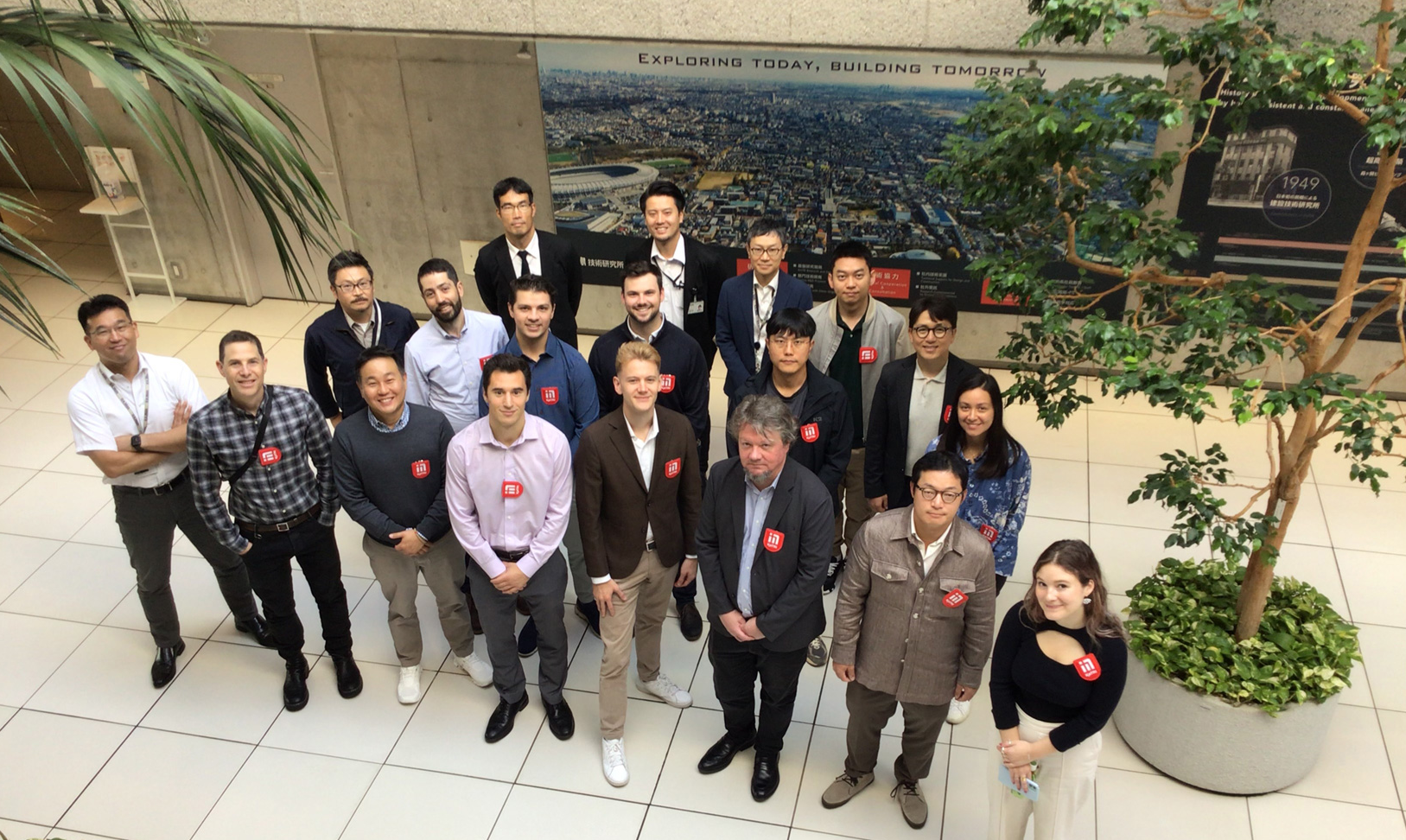
In 1949, Kajima opened the first technical research facility in Japan, which has since served as a hub for innovation within AEC. The Kajima Technical Research Institute (KatRI), located in Chofu City, has evolved alongside the ever-changing needs of our buildings and infrastructure, with a focus on technology designed to enhance safety and help mitigate the workforce crisis. Since its inception, KatRI has developed groundbreaking structures and projects that address the most pressing challenges within the industry today.
BuiltWorlds Global Innovator, Kajima Corporation, was founded in 1840 with headquarters in Motoakasaka, Minato, Tokyo, operates both domestically and internationally as a general contractor. They are one of Japan’s oldest and largest construction companies and are leading the way to decarbonize the built world more holistically. KatRI follows Kajima’s three company missions—Research & Development, Technical Cooperation & Consultation, and Training and Information Dissemination. This is achieved through the research facility’s ongoing efforts to explore new technology, along with maintaining and enhancing current core tech used today.
Below we will discuss the four domains with equipment that are being implemented at Kajima that will impact the future of infrastructure.
What to learn more about 50 Infrastructure leaders?
1. Disaster Prevention
Disaster prevention is crucial for protecting human lives, ensuring economic stability, and increasing sustainable development. This can be achieved through the adherence of safety procedures and regulations while also supporting communities to become more resilient to potential disasters through comprehensive planning and risk assessment. Kajima is doing this through the development of solutions to combat natural disasters such as earthquakes, tsunamis, dangerous wind, flooding, and fires.
Equipment Utilizing Disaster Prevention: High Performance 3-Dimensional 6 D.O.F shaking table “W-DECKER”
This experiment-based tech can accurately reproduce seismic ground motions and long-period, large-amplitude vibrations. The main shaking table can hold up to 60 tons and has the ability to reproduce recorded large-amplitude earthquakes within Japan, alongside the long-period shaking table that reproduces long-period motions.
2. Civil Engineering
Civil engineering initiatives are crucial within AEC, as they provide stability within infrastructure development. These tools and techniques push the built world forward with improved safety, sustainability, and functionality of structures. These initiatives are needed to produce essential public infrastructure such as bridges, coastal structures, bams, earthworks, tunnels, and urban civil works.
Equipment Improving Civil Engineering Initiatives: Large-Size Structural Testing Laboratory
The testing laboratory holds a reaction wall and floor in which large-scale loading tests are performed. This is done to examine the strength and quake-resistance of different structures, including load testing systems for auxiliary equipment. Kajima then applies the test results into civil engineering and other construction works including, nuclear power plants, large-span bridges, marine structures, and high-rise buildings.
3. Environmental Consideration
Historically, the AEC industry has been recognized as a top contributor towards environmental degradation due to non-sustainable materials, excessive waste, and outdated practices. It is essential for the industry to address these widespread issues by taking environmental considerations into account such as increasing sustainability initiatives and climate change mitigation.
Equipment Promoting Environment Consideration: Carbon-Capturing Concrete
CO2-SUICOM®, developed collaboratively by Kajima, The Chugoku Electric Power Co., Denka, and Landes Co., is a pioneering material within global carbon-capturing. This concrete not only strongly reduces CO2 emissions produced during the manufacturing process, but also absorbs carbon dioxide from the atmosphere during the material’s hardening process. This is a major advancement within concrete production, as CO2 emissions due to concrete have been a significant contributor of emissions within the industry.
4. Building Science
The integration of building science principles into AEC practices is an important endeavor for industry teams. This encompasses a handful of essential practices, including thermodynamics and material science, to further improve energy efficiency, resilience, and level of comfort for occupants within structures. Some structures that greatly benefit from these practices include offices, commerce facilities, factories, hospitals, and laboratories.
Equipment Improving Building Science Initiatives: miniGeo (small soil exploration vehicle)
This compact ground surveying vehicle can operate within narrow or uneven spaces and examine the hardness of the ground by drilling a hole with a rotary impact drill. Data received from the vehicle is then processed to provide key proactive information about ground support layers to enable the best conditions within the foundation of construction projects.
Kajima is a 2022 BuiltWorlds Global Leader
This award focuses on the most active and influential companies in the AEC space. Apply to be featured on the 2023 list below.


Discussion
Be the first to leave a comment.
You must be a member of the BuiltWorlds community to join the discussion.